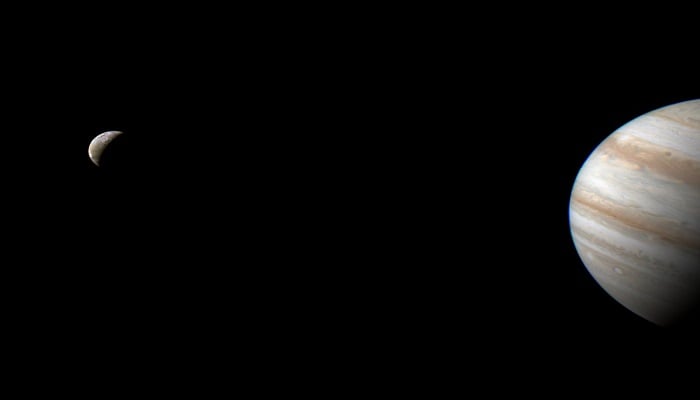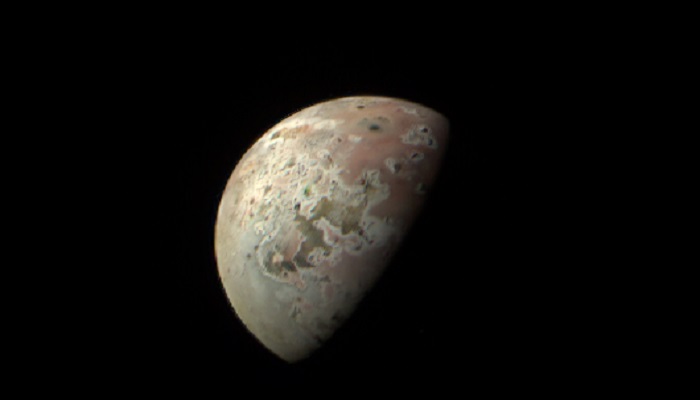Nasa's Juno spacecraft peeks into volcanic world of Jupiter's Io moon
In the following year, Juno's proximity to Io will continue to decrease, ultimately reaching a remarkably close distance of only 1,500 kilometres
May 21, 2023

The Juno spacecraft, operated by the space agency, has been progressively approaching Jupiter's moon Io, a geologically active celestial body known for its volcanoes and lava, Mashable reported.
In early March, Juno came within approximately 32,044 miles of Io. On May 16, it made a return pass at a closer distance of just 22,060 miles, capturing detailed imagery of the moon.
In the following year, Juno's proximity to Io will continue to decrease, ultimately reaching a remarkably close distance of only 930 miles or 1,500 kilometres.
This closeness is quite significant, considering that the Hubble telescope, for comparison, orbits around 332 miles above Earth.
"We're marching closer and closer," Mashable quoted Scott Bolton, the Juno mission's principal investigator as saying in March.
During its 51st orbit around Jupiter, the Juno spacecraft took these images. Although Juno is not on a direct course towards Io, it is strategically conducting close flybys as it continues its trajectory around the neighbouring gas giant.
The captured images hold immense value for planetary scientists.
"Io is the most volcanic celestial body that we know of in our solar system," Bolton said in a statement(opens in a new tab).
"By observing it over time on multiple passes, we can watch how the volcanoes vary — how often they erupt, how bright and hot they are, whether they are linked to a group or solo, and if the shape of the lava flow changes."

Io's volcanic landscape can be attributed to its position in an ongoing gravitational battle between the colossal Jupiter and two other significant moons, Ganymede and Europa, the latter of which potentially contains a substantial ocean.
This constant gravitational tug-of-war generates intense internal heat within Io, a moon slightly larger than ours. The tremendous heat strives to escape to the surface, causing the presence of molten lava and extreme volcanic activity.











